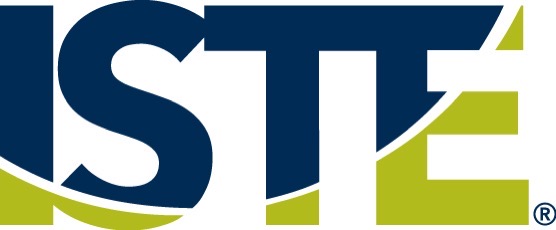
22 Feb ISTE Certification 02
[Sharing my ISTE Certification journey…]
 ISTE Certification has kept me busy! Despite my familiarity with all of the ISTE Standards, I have found that I am thinking much more deeply about the ISTE Standards for Educators as I go through this process with my cohort (which I appreciate)…
ISTE Certification has kept me busy! Despite my familiarity with all of the ISTE Standards, I have found that I am thinking much more deeply about the ISTE Standards for Educators as I go through this process with my cohort (which I appreciate)…
One of our activities asked us to reflect on the Universal Design for Learning (UDL) guidelines. Here’s some of what I wrote:
ENGAGEMENT
UDL Guideline(s): Recruiting Interest, Sustaining Effort & Persistence, Self Regulation
Tool(s): Blogging platforms such as WordPress or SquarespaceI believe in technology tools that have low floors, high ceilings, and wide walls (i.e., they are relatively easy to learn but have extraordinary, open-ended, and wide-ranging power). One such tool for me when it comes to the UDL principle of Engagement is a blog. Blogs allow learners and creators to do almost anything, particularly if they use a more powerful, self-hosted platform such as WordPress or Squarespace. The ability of blogs to host almost any kind of media that we wish (text, audio, video, images, charts, tables, diagrams, hyperlinks) in almost any configuration that we wish (see, e.g., the wide variety of blog templates) means that they are infinitely customizable. Accordingly, learners and creators can make their blog anything that they wish. This capacity taps directly into the Engagement guideline of Recruiting Interest because it ‘optimizes individual choice and autonomy.’ Similarly, the interactive nature of blogs (e.g., hyperlinks, pingbacks, comments, embedding of social media feeds, RSS subscription) highlights the Engagement guideline of Sustaining Effort and Persistence because it ‘fosters collaboration and community.’ Blogs can be deeply reflective tools that also foster visibility, sharing, contribution, and connection, which aligns directly with the Engagement guideline of Self Regulation and its emphasis on self-assessment, reflection, and motivation.
REPRESENTATION
UDL Guideline(s): Perception, Language & Symbols, and Comprehension
Tool(s): Presentation software such as Apple Keynote, Microsoft PowerPoint, or Google SlidesI believe in technology tools that have low floors, high ceilings, and wide walls (i.e., they are relatively easy to learn but have extraordinary, open-ended, and wide-ranging power). An underutilized tool for the UDL principle of Representation is presentation software such as Keynote, PowerPoint, or Google Slides. As I work with my graduate students – some of whom are differently abled than their educator peers – I have found that presentation software creates an open ‘green field’ of possibility. Students can use text. They can use images. They can create lines, diagrams, charts, tables, timelines, and concept maps. They can embed audio or video. They can tap into various color schemes, fonts, and transparency. They can tap into the power of layering, grouping, animations, and transitions. Together, these simple-to-learn capabilities that we often take for granted in presentation software can be used in incredibly diverse ways to represent any topic, idea, or concept that we wish with as much complexity as we wish. Recent examples of this in our own cohort include our introductions and our ISTE Standards for Educators jigsaw activity. These examples illustrate how a simple set of tools can create phenomenally-powerful and divergent opportunities to share what we know, can do, and have learned. The capabilities inherent in presentation software allow us to check off the boxes in essentially every subcategory of Representation (i.e., Perception, Language & Symbols, and Comprehension).
ACTION & EXPRESSION
Guideline(s): Executive Functions
Tool(s): Google SheetsI believe in technology tools that have low floors, high ceilings, and wide walls (i.e., they are relatively easy to learn but have extraordinary, open-ended, and wide-ranging power). For the UDL Principle of Action & Expression, I chose to focus on one particular guideline, Executive Functions. For the past few years, I have been making my own interactive templates in Google Sheets. My students – or workshop participants – can go directly to a template that I have made and interact in a variety of ways with content, questions, or each other. I like that Google Sheets creates a different URL for each tab, and I can configure and merge the rows, columns, cell entries, formulae, auto-calculations, and conditional formatting into almost any format I wish. My principal licensure students and I use them routinely to work on thorny leadership problems of practice and systemic school and district redesign concerns. I also like that with a quick mouse click students can see each others’ responses as well if they are on a different tab rather than a shared one. I can even hide sections of the template and reveal them later for additional consideration. The possibilities are nearly endless for individual or small group, collaborative work, and the shared, online nature of the tool allows for easy access and easy archiving of our thinking work together. All of this connects directly to the Executive Functions checkpoints related to goal-setting, planning, strategy development, managing information and resources, and monitoring progress.
Nothing earth-shattering here, but I enjoyed the opportunity to think a little more about this!
Related Posts
[Sharing my ISTE Certification journey…] ISTE Certification has kept me busy! Despite my familiarity with all of the ISTE Standards, I have found that I am thinking much more deeply about the ISTE Standards for Educators as I go through this process with my cohort (which I appreciate)… One of our activities asked us to reflect Learning and Teaching, Miscellaneous, Tech Integration, ed tech, ISTE, iste certification, professional development, tech integrationRead More
Learning and Teaching, Miscellaneous, Tech Integration, ed tech, ISTE, iste certification, professional development, tech integrationRead More

Sorry, the comment form is closed at this time.